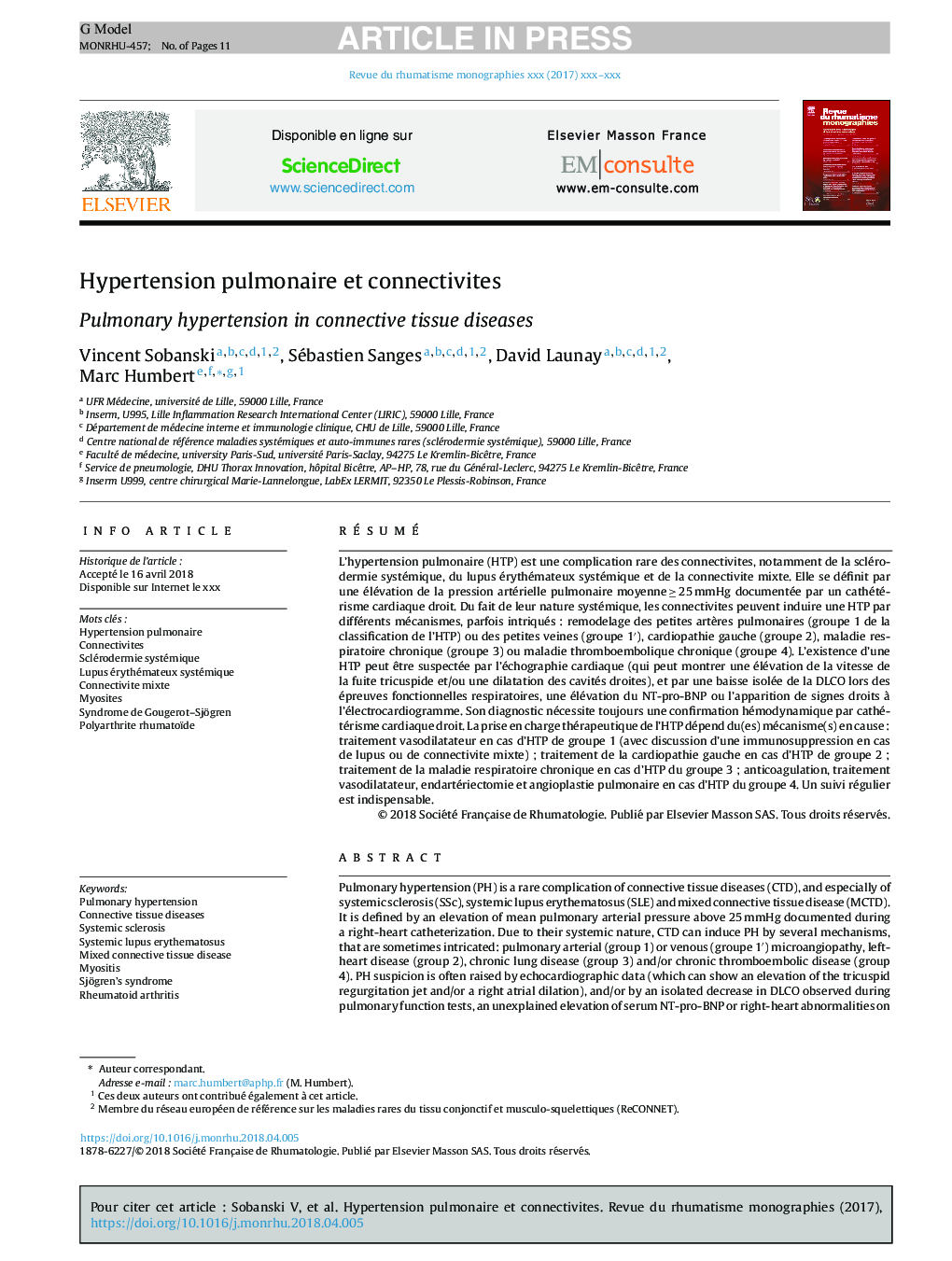| Article ID | Journal | Published Year | Pages | File Type |
|---|---|---|---|---|
| 8743511 | Revue du Rhumatisme Monographies | 2018 | 11 Pages |
Abstract
Pulmonary hypertension (PH) is a rare complication of connective tissue diseases (CTD), and especially of systemic sclerosis (SSc), systemic lupus erythematosus (SLE) and mixed connective tissue disease (MCTD). It is defined by an elevation of mean pulmonary arterial pressure above 25Â mmHg documented during a right-heart catheterization. Due to their systemic nature, CTD can induce PH by several mechanisms, that are sometimes intricated: pulmonary arterial (group 1) or venous (groupe 1â²) microangiopathy, left-heart disease (group 2), chronic lung disease (group 3) and/or chronic thromboembolic disease (group 4). PH suspicion is often raised by echocardiographic data (which can show an elevation of the tricuspid regurgitation jet and/or a right atrial dilation), and/or by an isolated decrease in DLCO observed during pulmonary function tests, an unexplained elevation of serum NT-pro-BNP or right-heart abnormalities on an electrocardiogram. Its formal diagnosis always requires a hemodynamic confirmation by right-heart catheterization. Therapeutic management of PH depends of the underlying mechanism(s): pulmonary vasodilators in group 1 PH (with possible use of immunosuppressants in case of SLE or MCTD); management of an underlying left-heart disease in group 2 PH; management of an underlying chronic lung disease in group 3 PH; anticoagulation, pulmonary vasodilators, pulmonary endartectomy or balloon pulmonary angioplasty in group 4 PH. Regular follow-up is mandatory in patients with PH and CTD.
Keywords
Related Topics
Health Sciences
Medicine and Dentistry
Immunology, Allergology and Rheumatology
Authors
Vincent Sobanski, Sébastien Sanges, David Launay, Marc Humbert,
